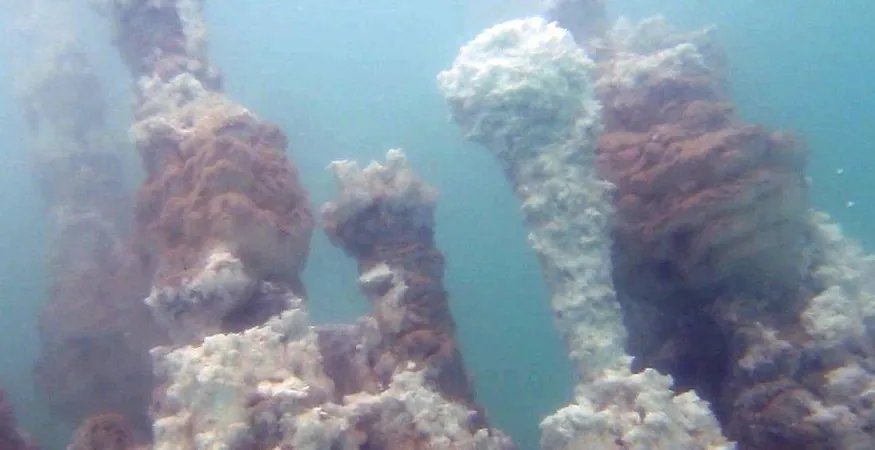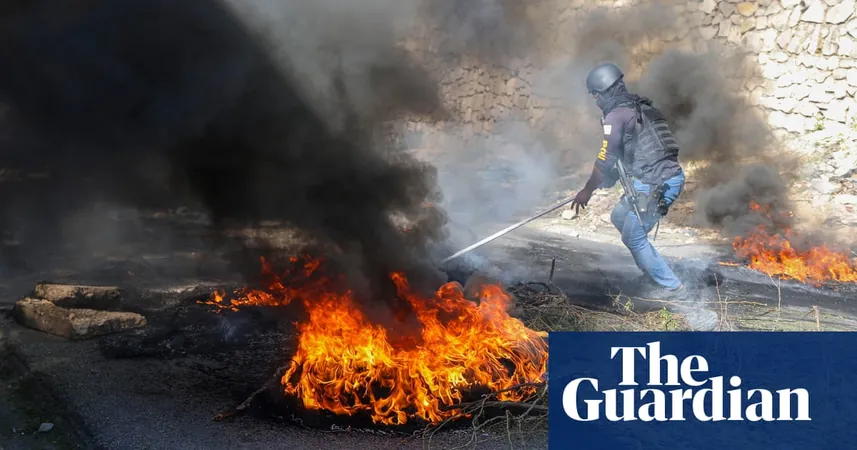
Mysterious Salt Chimneys Emerge from the Depths of the Dead Sea: A Warning for Future Sinkholes?
2024-11-17
Author: Olivia
Introduction
In a remarkable discovery, researchers have unveiled meter-high salt chimneys lurking beneath the tranquil surface of the Dead Sea, thanks to a collaborative project led by the Helmholtz Centre for Environmental Research (UFZ). These stunning formations, reminiscent of natural phenomena such as black smokers and tufa towers, are fascinating structures generated by the crystallization of minerals.
Formation of Salt Chimneys
While black smokers spew out hot, mineral-rich fluids at mid-ocean ridges, and tufa towers spring forth from calcium-rich water sources, the unique salt chimneys in the Dead Sea are formed by highly saline groundwater that rises to the surface as brine plumes. This unusual circumstance arises because the density of the saline water is still lower than the surrounding water, despite saltwater generally being denser than freshwater.
Dr. Christian Siebert, lead author and hydrogeologist at UFZ, explains the phenomenon: “Due to the lower density of the brine compared to the Dead Sea's water, it ascends like a jet. It may resemble smoke, but it’s indeed a saline fluid.” The researchers made this stunning discovery during underwater surveys, where divers encountered these chimneys at depths of about 30 meters (approximately 100 feet).
Growth Rate and Size of the Salt Chimneys
What's astonishing is the rapid growth rate of these salt chimneys, which can expand several centimeters in just a single day when lake water prompts the brine to crystallize explosively upon emerging from the lake bed. Many chimneys range from one to two meters high (around three to six feet), but some giants reach over seven meters (more than 22 feet) with widths spanning two to three meters.
Implications for Sinkholes
However, these striking formations are more than geological curiosities; they possess significant implications for predicting the formation of sinkholes. These dangerous craters arise when underground layers of salt or other soluble minerals dissolve, leading to sudden collapses. With numerous sinkholes appearing along the Dead Sea in recent decades—thousands, in fact—scientists are eager to understand their origins and predict where the next ones might arise.
Dr. Siebert points out, “Currently, there’s no reliable method for predicting sinkhole occurrences, which can be life-threatening and disrupt agriculture and infrastructure.” His research team has discovered a correlation between the locations of the salt chimneys and areas where the land surface has collapsed. This suggests that the groundwater flows responsible for these chimneys may also create hazardous underground cavities.
Conclusion
Describing the chimneys as "white smokers," Siebert highlights their potential as valuable tools in identifying regions at risk for imminent land collapses. As humanity grapples with environmental changes, understanding these formations could become pivotal in anticipating geological hazards in the future.
The full study, titled "A New Type of Submarine Chimneys Built of Halite," has been published in the journal *Science of The Total Environment*, revealing the promising intersection of underwater geology and practical environmental science. Stay tuned for more updates as this groundbreaking research unfolds!









 Brasil (PT)
Brasil (PT)
 Canada (EN)
Canada (EN)
 Chile (ES)
Chile (ES)
 España (ES)
España (ES)
 France (FR)
France (FR)
 Hong Kong (EN)
Hong Kong (EN)
 Italia (IT)
Italia (IT)
 日本 (JA)
日本 (JA)
 Magyarország (HU)
Magyarország (HU)
 Norge (NO)
Norge (NO)
 Polska (PL)
Polska (PL)
 Schweiz (DE)
Schweiz (DE)
 Singapore (EN)
Singapore (EN)
 Sverige (SV)
Sverige (SV)
 Suomi (FI)
Suomi (FI)
 Türkiye (TR)
Türkiye (TR)